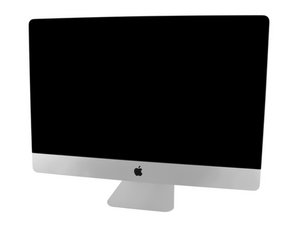Complete FusionDrive-ectomy procedure
I've got a Late 2015, 5K 27" Retina, Late 2015 iMac. I bought it new in 2017. It's still got Mojave installed. It does everything I need, and it provided nearly 5 years of faithful service - until this past weekend.
Long story made short, the Fusion Drive is bfu. Disk Utility was no help, so I ran DriveDx, confirming a drive fault. After perusing the repair details here on other Q&A, I had decided that I'd turn this over to Apple for repair; I took it to a "Genius" at the local Apple Store. However, after booting with Ctrl-R & running diagnostics for about 90 minutes, the "Genius" scotched that idea. He said they wouldn't repair a "Vintage" iMac, and my only alternative was to buy a new iMac! I commented that seemed odd: Apple claiming to be environmentally friendly, but consigns my iMac to the landfill because their "Fusion Drive" design was never ready for Prime Time. Then I left, resolved to take care of this myself.
Having read through some of the illustrated Fusion Drive repair answers, I think I'm familiar with the mechanical portion of the procedure. I'm far less comfortable wrt the software portion; i.e. splitting the drives, formatting properly, etc. I think perhaps the best way for me to structure my question is to outline what I think is the correct procedure & request feedback for any errors noted. Again, most of my uncertainty has to do with what and how to execute the software steps to achieve my objective.
My objective is a fully functional system using a single 2 TB SSD (I've had good luck with Crucial). If it has no negative side-effects, I'm happy to leave the dysfunctional Fusion-SSD in the system as it seems to require several additional steps. That said, here's my outline & some questions re the software steps; please provide corrective feedback where needed:
- "Split" the SSD and the HDD: This procedure was a "chosen solution", but I don't follow it - it seems to be written to be performed AFTER the physical drive replacement/removal, and I read somewhere else that the drives must be split before the physical removal???
- Obtain the proper tools & crack open (carefully) the shell to access the HDD. This procedure seems to be the correct one for HDD removal? I assume a 2 TB Crucial drive will serve adequately as a single drive - replacing both the HDD and the SSD?
- Removing the SSD seems covered in this procedure, but as I mentioned: I would prefer to just leave it in the system if there's no downside to that. Hoping that software & drive configuration can effectively "remove" this SSD from the system?
- If possible, I'd like to verify that everything is working before re-assembling the clamshell.
- WRT the OWC temp sensor: Based on this discussion, is it still true that I will not need the temp sensor kit for my iMac?
- I know I'll need to make a bootable USB drive to install Mojave on the new SSD. I am assuming that nothing special will be required after the repair; i.e. install OS, then restore files from Time Machine?? (I've never restored a TM backup, but I do have one for this machine).
So that's all I can think of - any and all suggestions and corrective feedback will be much appreciated.

안내서
iMac Intel 27" Retina 5K Display 하드 드라이브 교체
난이도:
운영
—
1 - 2 hours

안내서
iMac Intel 27" Retina 5K Display Blade SSD Replacement
난이도:
어려움
—
2 hours
좋은 질문 입니까?


 1
1 
 329
329  970
970
댓글 2개
What is your workflow?
Are you a creator type dealing with photo's, artwork or video? If you are you should replace the NVMe blade SSD with a 500 or 1TB blade drive to hold your OS and apps leaving a good portion of the drive empty so it can be used by the OS and apps for virtual RAM and cache space and lastly if your apps use scratch space aim it to this dive.
Dan 의
No - I don't consider myself a creator "type". I edit the occasional video with iMovie, use `ffmpeg` occasionally for FLAC conversion, and occasionally do a bit of software development. If I wanted to do more of that, I'd look into a Mac Pro - or something along those lines. No - I'm just an average Joe Shmoe who needs a reliable computer for my day-to-day activities. I do like the idea of "re-purposing" older Macs to run Linux - I've got a 2011 17" MBP that I dual-boot macOS & Ubuntu (https://github.com/seamusdemora/seamusde...) - I use it regularly. This iMac will pull similar duties I expect. I appreciate the question, but I *think* I'll get all the performance I need without a NVMe Blade. OTOH, if there are sound logistical reasons for adding that I'm happy to try it!
The way I see it is that I'm saving loads postponing the purchase of a new Mac, so I've got the budget to try some things. Do you feel the NVMe will make a significant diff in performance?
Seamus 의